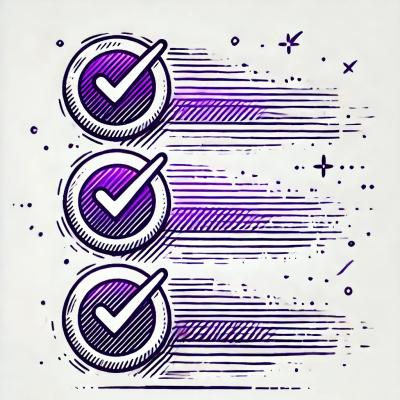Block template: custom element
Step one: copy this template
See https://blockprotocol.org/docs/blocks/develop
TL;DR: Run npx create-block-app@latest [your-block-name] --template=custom-element
Other templates are available. See npx create-block-app@latest --help
Step two: decide on and build the entity type for your block
A key part of the Block Protocol is the use of types to describe the data your block will work with.
Your block should be associated with an “entity type” which will be used by embedding applications
to understand what sorts of entities can be sent to it (e.g. what properties do they have?).
You can create an entity type on blockprotocol.org — see the docs for a full guide.
Once you have created the type representing the data your block needs, copy its URL for use in the next step.
Step three: update your block's metadata
-
Change into the folder: cd path/to/your-block-name
-
Update the blockprotocol metadata object in package.json:
- set
blockEntityType to the URL of the entity type you created in the previous step - change the default
tagName under blockType to the tag for your element - optionally update additional fields which will be used to identify and describe the block when published:
displayName: a friendly display nameexamples: an array of example data structures your block would accept and useimage: a preview image showing your block in action (in place of public/block-preview.png)icon: an icon to be associated with your block (in place of public/omega.svg)name: a slugified name for your block (which may differ to the package name in package.json)
- this may either be in the format
slug or @namespace/slug where namespace is your blockprotocol.org username
- Run
yarn codegen to automatically generate TypeScript types from your block's entity type (you can modify the codegen field to generate code for other types as well)
Step four: implement your block's logic and UI
This template uses the Lit custom element framework. Please see the Lit docs for general help in defining an element using the framework.
-
Write your block starting in app.ts. To test it during development:
-
When finished, run yarn build (or npm run build), which:
- Bundles the component into a single source file
- Generates a
block-metadata.json file which:
- points to the
schema and source files - brings in metadata from
package.json, such as the block name and description - additional brings in anything in the
blockprotocol object in package.json, e.g.
displayName: a friendly display nameexamples: an array of example data structures your block would accept and useimage: a preview image showing your block in actionicon: an icon to be associated with your blockname: a slugified name for your block (which may differ to the package name in package.json); it can be defined as blockname or @namespace/blockname, where namespace must be your username on blockprotocol.org if you intend to publish it there
- lists the
externals - libraries the block expects the host app to provide
- Once uploaded to a remote folder, embedding applications can access
block-metadata.json to load a block and its schema. This file is documented in full here.
Please see the Block Protocol docs
for a fuller explanation of querying, creating and updating entity data from your block.
You can format your code using yarn format (or npm run format).
If you want to use environment variables in development, add a .env file in this directory, and then you can access variables defined in it via process.env.VARIABLE_NAME. This is useful for providing a blockProtocolApiKey to MockBlockDock in dev.tsx.
e.g. your .env file might look like this:
BLOCK_PROTOCOL_API_KEY=super-secret
and dev.tsx like this:
return (
<MockBlockDock
blockProtocolApiKey={process.env.BLOCK_PROTOCOL_API_KEY}
Step five: publish your block
Head over to blockprotocol.org to read instructions on publishing your block.
Debugging
The component can be debugged locally by first starting yarn dev.
Now (using VS Code), go to the Debug tab, select "Launch Chrome" and start the debugger (F5).
You should now be able to set breakpoints and step through the code.



